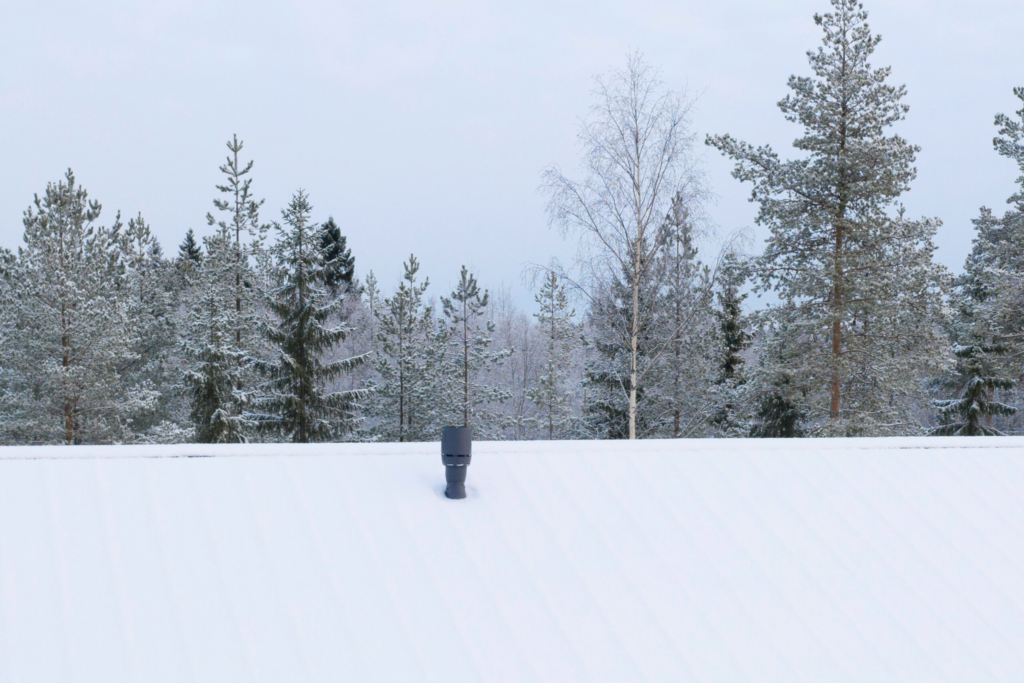Does a Radon Fan Freeze in Cold Weather? The Root Cause Is Excessive Moisture

The purpose of a radon fan is to remove radon that accumulates beneath the building and direct it outside, away from indoor spaces. However, in some cases during extremely cold winter weather, the fan may freeze and the system can become damaged. This freezing is often caused by excessive moisture.
Freezing in a radon fan occurs when moist air from the ground is vented outside, particularly during extended periods of cold weather. When there is more moisture than usual, it condenses in the outdoor air and can form ice. Frost and insufficient thermal insulation in the radon piping or exhaust fan increase the risk of moisture freezing. The heat generated by the fan’s motor helps prevent freezing to some extent, but during severe cold, it’s not enough to stop condensation if the moisture load is unusually high. When the fan freezes, ice buildup on the motor blades causes imbalance, which can damage the bearings. The root cause of freezing is excessive moisture load—it’s not actually a fault in the motor or its design, but rather a result of unsuitable conditions.
How to prevent a radon fan from freezing
Preventing freezing starts with addressing the root cause—moisture buildup. Here are some steps you can try:
- Reduce the entry of moist air into the piping system.
- Check the functionality of the drainage system. Open or cleaned drains help reduce moisture rising from the ground.
- Ensure sufficient slope in the radon pipes and arrange for the removal of any condensation water.
- Insulate the radon pipe
- Adding insulation around the radon pipe can prevent cold outdoor air from freezing the piping and reduce the formation of condensation. Consult an expert on suitable insulation materials and thicknesses.
- Measure radon levels and adjust the fan power if necessary
- Every building has its own unique radon conditions. Measuring radon levels during different seasons helps find the right balance between sufficient air extraction and the risk of freezing.
What to do if your radon fan has already frozen?
First, assess whether defrosting is necessary. If the fan blades are visibly covered in ice, it’s best to turn off the device and allow the ice to melt naturally. Restarting the fan too soon can cause further damage to the bearings or other mechanical parts.
Once the ice has been removed, check for any possible damage. Uneven operation caused by ice can harm the motor’s bearings or other rotating components. If needed, service or replace worn parts to prevent unnecessary shortening of the fan’s lifespan.
However, simply removing the ice is not enough in the long term. To prevent the issue from recurring, it’s essential to control moisture levels. Make sure the radon piping structures and insulation are in good condition, and check how condensation water is being drained. This helps prevent new ice buildup and protects your system from repeated maintenance needs.
If you’re unsure about the proper functioning of your system or the structural solutions in place, consult a radon professional.
